Understanding the Different Types of Arm Compression Garments
Apr 27th, 2021
Following breast cancer surgery, your doctor may recommend you wear arm compression garments to prevent the development of lymphedema.
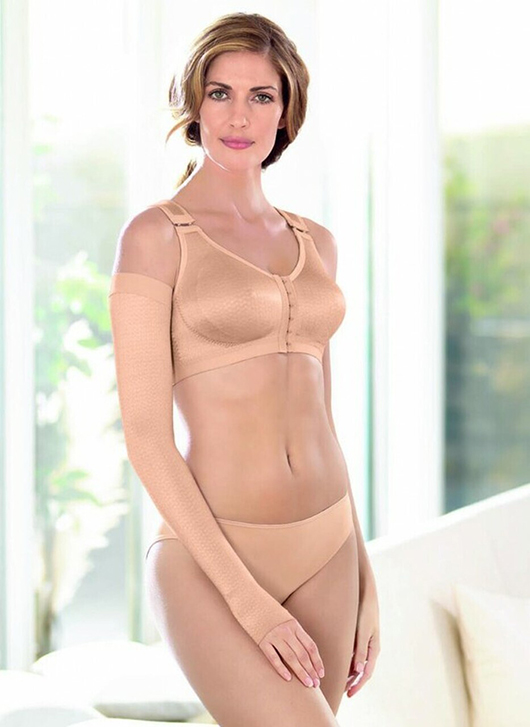
Arm compression garments help keep your body functioning healthily and prevent fluid build-up in your extremities following a mastectomy or lymph node removal. Understanding the different types of these garments can keep you on track for healing and get you back to the things you enjoy quicker.
What is Lymphedema?
Lymphedema is a condition potentially occurring following your breast cancer treatment. Damage to lymphatic vessels or the removal of lymph nodes disrupts the flow of lymph fluid, and this fluid builds up in certain areas of your body. This build-up causes swelling and pain in the affected location.
Lymphedema, while not life-threatening, can lead to infection and cause other dangerous complications, including cellulitis and sepsis.
What are Arm Compression Garments?
One way to prevent and treat lymphedema is compression therapy. Arm compression garments, or sleeves, are often prescribed by doctors and come in different types and compression levels.
The key to these specialty garments is their level of compression. By way of a pressure gradient, they apply pressure to move the flow of lymph fluids away from the affected area, preventing the accumulation that leads to swelling. These compression levels include:
- Mild compression provides pressure of 8-15 mmHg and most often used for aching joints and soreness and only occasionally to treat lymphedema.
- Medium compression provides pressure of 15-20 mmHg for more severe aches and pains in joints or muscles and is occasionally used for lymphedema.
- Firm compression (Class 1) provides pressure of 20-30 mmHg and usually serves as the starting point for increasing the circulation of lymphatic fluids and blood to prevent or treat lymphedema.
- Extra-firm (Class 2) provides pressure of 30-40 mmHg for more severe symptoms of lymphedema and to increase circulation and relieve hypertension.
- Medical compression (Classes 3 and 4) provides pressure of 40-50 mmHg (class 3) or 50-60 mmHg (class 4) for custom prescriptions.
You will need to work with your doctor or lymphedema therapist to determine the compression level suitable to you personally.
Types of Arm Compression Garments
Compression sleeves usually come in three different style types, and each one reduces swelling in similar ways. While the compression level is important, so is comfortability. Work with your medical advisors to determine which type will work best for you.
Upper Arm to Hand
This type includes elongated sleeves incorporating a gauntlet (partial glove) or fingerless glove to add pressure from the upper arm to the wrist area. This type offers a more comprehensive graduated compression along the arm and wrist areas.
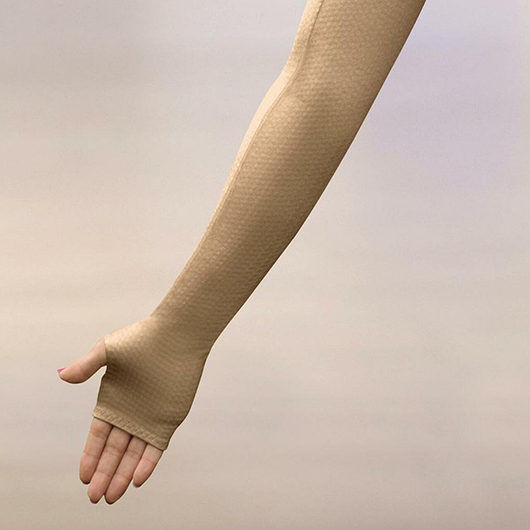
A full-length garment, the Anita Halifax Lymph O Fit Lymph Support Arm Sleeve is designed with a contoured upper end for more lymphatic relief and a lower end shaped to prevent swelling in the hand. This sleeve is ideal for mild lymphedema patients and creates a draining and massaging effect.
Upper Arm to Wrist
These compression sleeves stretch from the upper arm and stop at the wrist. Shorter ones are often referred to as elbow sleeves. There are many brands and designs for this type of compression garment, so go for one that blends in or stands out with colorful displays.
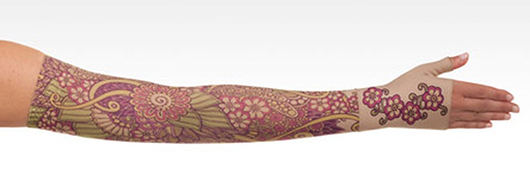
The Juzo Signature Boho Collection Compression Sleeves provide comfort with a beaded silicone bead top to prevent slippage and soft material to avoid skin irritation. Choose between four stylish printed patterns to add an element of whimsy while you bravely address health concerns. You can also add on a hand gauntlet in the same pattern if you choose.
Around the Back Bilateral or Dual Arm Sleeves
Connected across your back at the shoulder level are the bilateral or dual arm compression sleeves. This type of sleeve features clips that securely hold the garment to ensure continual graduated pressure in the right places. Bra or vest styles with dual compression arm sleeves are also available.
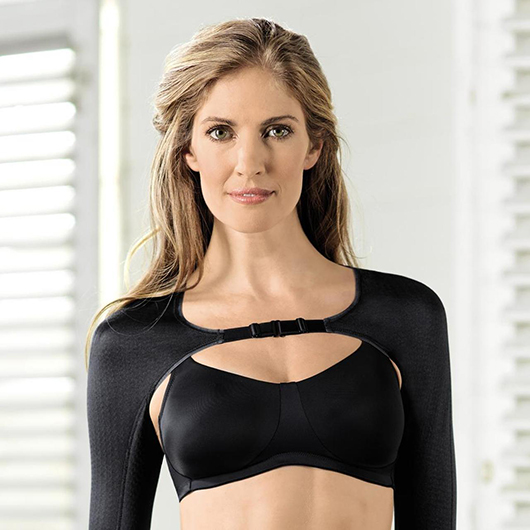
The Anita Houston Lymph Support Arm Sleeves with Shoulder Section comes with a class 1 or firm compression. The design provides for an adjustment to fit your needs and can easily be worn under clothing unnoticeably.
Glove or Gauntlet
Fingerless gloves or hand gauntlets serve as coverings for the wrist and partially the hand. These can be worn separately or in combination with upper arm to wrist sleeves and are for patients requiring more compression coverage or hand-specific compression. These items are easy to apply and extremely comfortable to wear.
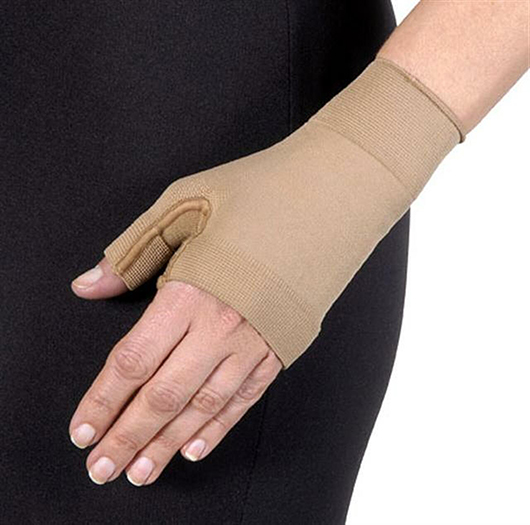
The Jobst Bella Strong Ready-To-Wear Hand Gauntlet comes in two different compression levels and two standard colors of beige or black. These garments fit small to large sizes. You may want to buy a set including a sleeve and gauntlet to alternate or wear together depending on your needs.
Another way to classify arm compression garment types is to look at those designed for daytime use compared to nighttime. Nighttime sleeves are usually bulkier and larger than the daytime options and offer lower compression levels.
Shop for Arm Compression Garments at Mastectomyshop.com
Compression arm garments serve important roles in your health and wellbeing following breast cancer treatment. If you are required to wear a compression sleeve, Mastectomyshop.com offers different types along with knowledgeable staff to help you find the one you need. Call us today at 877-413-2272 to learn more about our arm compression products and their benefits.



